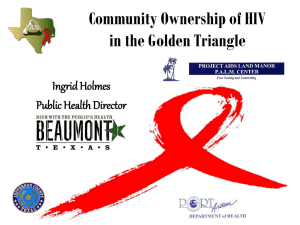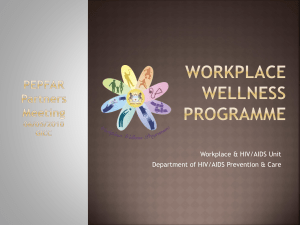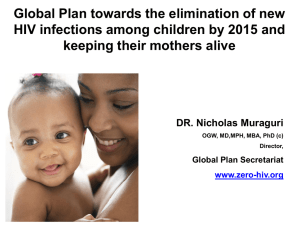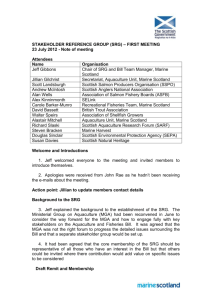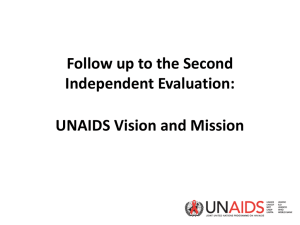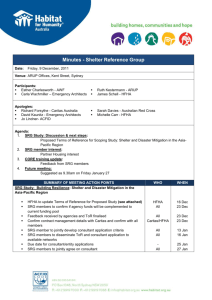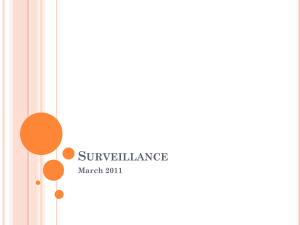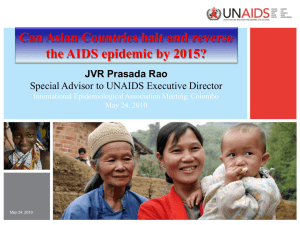GF Proposal Development Flowchart
advertisement
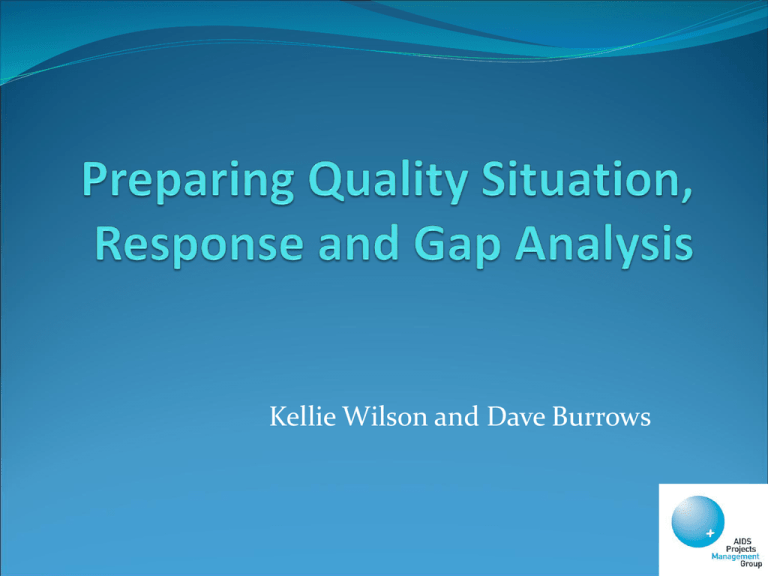
Kellie Wilson and Dave Burrows Issues One key area of improvement required for GF proposals include the provision of: stronger more comprehensive situation analysis details on current and planned responses as well as programs addressing vulnerability in general comprehensive analysis of the programmatic gaps and opportunities honest and open discussion on the key challenges and proposed strategies to address challenges in dealing with the program gaps and issues A Strong SRG Analysis Team The team created to develop the National Situation, Response and Gap Analysis should include multi-sector representation with people able to bring the following: an understanding of the country’s cultural traditions, history, and political structure; a familiarity with and ability to obtain the relevant social research; access to a range of opinions and a variety of information; capacity to think broadly across a range of complex social issues; an understanding of how HIV is transmitted and how its transmission and impact can be minimized; an understanding of how social and economic circumstances affect the spread of the virus and increase men’s and women’s vulnerability to infection; and an ability to be thorough and fair in studying and presenting the facts. Source: UNAIDS, 1998, “Guide to Strategic Planning Processes for a national response to HIV/AIDS” Sources of Information Information for inclusion in a strong SRG analysis should come from a wide variety of sources: National demographic reports and documents World Bank country reports including human development indicators National Governance reports and documents UNGASS Reports UNAIDS and co-sponsor country and regional reports National Strategic Plans, M&E plans and Action Plans Surveillance, Operational Research, KAPB surveys, household surveys, health facility surveys Program Evaluations and Reviews Studies into cultural practices Geographical Mapping documents Previous situation, response and gap analysis Rapid assessment processes Interviews and Group Discussions Broader development reports ie gender, poverty, cultural etc What to Include? SRG Analysis should include: Demographic Issues Political, Legal and Economic Issues Social Systems Cultural Issues HIV Issues Current Responses Demographic Issues Population data including age, cultural, gender breakdown, health indicators, education and employment rates Geography including size, regional breakdowns, borders Population Mobility data, patterns and drivers including conflict, economic, immigration & emigration Political, Legal and Economic Issues Government Structures (National to Local) Economic Factors and indicators including poverty Legal structures and human rights issues, legislation and frameworks Social Systems Health Services Education Systems Media systems Social Support programs Civil Society Organisations and Structures Private Sector Cultural Issues Ethnic and Cultural Issues Community systems Religious Systems and Structures Gender issues and dynamics Family structures and roles HIV Issues HIV prevalence HIV behavioural information HIV Service availability, coverage and quality HIV Knowledge, Attitudes and Practices STI epidemiological information TB/HIV issues Sexual and IDU rates and behaviours Response & Gap Analysis Status of HIV Strategic and M&E Plans, legislation, frameworks, guidelines and policies Overview of current HIV Programs or other initiatives addressing HIV prevention/vulnerability reduction, treatment and care Overview of broader programs addressing vulnerability factors and cross cutting issues such as health system strengthening, CSO strengthening, gender etc Highlight best practice regional or cultural approaches which may be adapted Review of the gaps and weaknesses, capacity gaps, impact of these initiatives and lessons learnt Identification of areas for mainstreaming Response & Gap Analysis Questions to consider when preparing the Response and Gap Analysis against the situation analysis: What is working and needs to be continued? What is working and can be expanded? What is not working and needs a new, more strategic approach? What is not relevant to current needs and should be dropped? What has not been addressed at all? Source: UNAIDS, 1998, “Guide to Strategic Planning Processes for a national response to HIV/AIDS” Key Issues Cover cross cutting issues like gender and MARPs issues within the SRG analysis Be succinct and clear in your analysis Provide a structure for the analysis which will easily flow into the program structure for the proposal Provide attachments where required to justify the statements being made in the narrative SRG analysis Be open and honest about issues, challenges and barriers Group Activity Challenges of SRG Analysis in MENA Region What are some of the challenges in undertaking SRG analysis in the MENA region What strategies and tools have members of your group adopted in addressing these challenges




